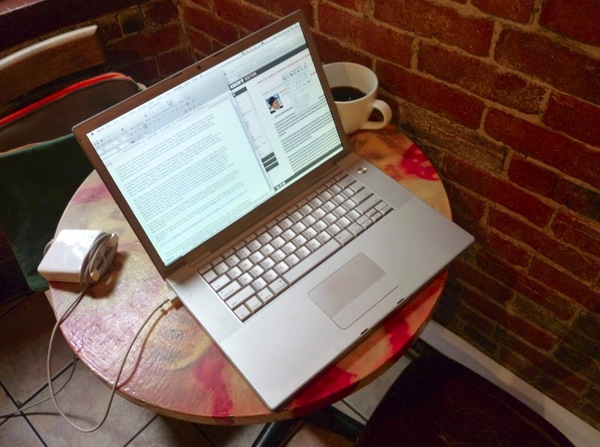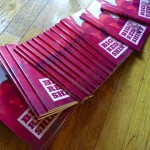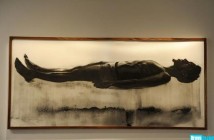It was an interesting experiment:
A rotating volunteer staff of one publisher, a few editors, and dozens of contributors (many whom never met in person) collaborate on a site devoted to topics related to local visual art.
Collaborate is the operative word, since this site was a group effort, borne out of a "hometown" investment and a willingness to volunteer. In hindsight, our mission might have been better understood as a cooperative, rather than a publication (the latter implying an atmosphere of exclusivity). The other editors and I recruited writers from all disciplines to write on various topics related to art in Boston and New England. I should note that many of the published pieces were unsolicited submissions from within the community: artists, students, gallerists, collectors, and historians (and even a petty crook). There has never been a solidified staff other than the lot of us (nor was there an office, for that matter). Every other Sunday, by email and IM, we assembled the issues. Every issue, no matter how planned out, never ceased amaze us that it came together the way that it did.
To me, Big RED & Shiny was equivalent of a photocopied 'zine–a part of the culture we trying to comment. In much the spirit Oni Gallery and Green Street Gallery, we wanted a space online that fostered participation in a way that these brick-and-mortar spaces had done. The custom design that Mr. Nash gave was an excellent polish, which gave momentum to the site and an illusion of authority. Authority might have been an abstract goal for us, but it eventually morphed into an identity, inevitably targeted by our critics. Though, now that we (the staff) have professional careers (in various, sometimes unintended capacities), by default, we have become the comical stereotype of "the man keeping you down."
As an editor, I was never interested in whether a writer thought an exhibit was good or bad (which I believe only reflects the writer's connoisseurship). I was interested in whether we could learn something about how the artwork reflected the times in which it was made, by looking at analogous strategies in our culture–past and present. I had hoped for the quality of writing that you might find in a anthology from the MIT Press Bookstore. This type of writing is shaped more like a thesis paper, rather than a typical art review. We wanted reviews to read like an abridged term paper. Even through the structure might be similar, the substance and voice substantially different. We wanted writing that would extend the conversation about intelligent artwork that couldn't be summarized by the constraints of other established outlets.
Our model was built on similar sites that themed themselves as journals, which offered articles, reviews, and columns, all updated on semi-regular basis. Some examples of extant online art journals (and this is just the A's):
Arts Journal, Aesthetica, Afterfall, Artcritical, artUS, Artthrob, ArtMag, The Arts Kitchen, Art Papers, and the list continues innumerably through the entire alphabet.
There were numerous initiatives we had hoped to spin off from the momentum of the main site. Much of our fundraising was an attempt to begin a hard-copy publishing initiative, and to develop a fund by which we could begin to compensate contributors. For various reasons, many of those initiatives never came to fruition. Though, in hindsight, those extra projects probably did not suit our model, and would have only diminished the energy from creating the main site.
Several years ago, I received an email from a artist who was active in the abstract expressionist camp from the early 1960's here in Boston. This artist was lamenting the fact that many of these artists have died, along with their history. It had never been written down. There was no record of their story. Big RED & Shiny, I hope, will be (in some form) a history of the arts during what was a boom time of the Bush era–a paradox of many venues in an atmosphere of conservative (or guarded) attitudes. Hopefully, we made a dent in people's attitudes, even if it was for a short time.
I am happy to see that in the intervening years, that there are so many other venues for artists and writers. I don't feel that their presence reflects a sense of competition. If fact, I think there should be more, if possible. I am glad we were what became a small portion of that coverage. I recommend that you tune your RSS reader onto some other local (and regional) online publications and artist initiatives:
Paper Monument, ArtVigor, The New England for Aesthetic Research, Rifrákt, Boston Lowbrow, HubArts, among the many others to come.
This, being my last essay, is a uneven assessment. I have mixed feelings about wrapping it up, and am not sure exactly what is the best way end. However, it is clear the time has come to wrap it up with Issue #135. Thanks again to all the contributors and supporters over the past six (+) years.
- Last trip to “the office” at the local café.
- Relic of the past: a surplus 2007 Annual books (now an alarm clock stand).
Images courtesy of the author.






